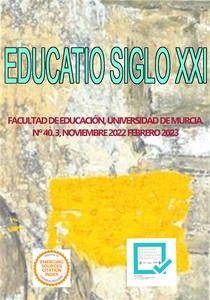“It improves our writing enthusiasm”: Exploring multimodal resources for teaching contemporary college English writing in China
Abstract
As Chinese college students work toward writing proficiency in English, a tension between direct, teacher-led instruction that focuses on proper usage conflicts with changes in literacy practices enabled by technology. As a visiting scholar to an American university, Author 1 was compelled to use strategies she saw in Author 2’s first year writing seminar. In this classroom research project, a mixed methods design is used by Author 1 to report on three changes to her teaching practices in college English courses – the use of multimedia presentation software, social network communication, and the Pigaiwang writing assistance tool. By comparing survey results, interview themes, and test scores between control and experimental sections, results demonstrate that students in the experimental group had generally more favorable ratings of the college English experience. Based on these outcomes in a limited study, implications for future changes in college English instruction in China are discussed.
Downloads
-
Abstract743
-
PDF (Español (España))493
References
Author 2 et al. Blinded for peer review.
Coiro, J., Knobel, M., Lankshear, C., & Leu, D. J. (2008). Handbook of research on new literacies. Routledge.
Creswell, J. W., & Creswell, J. D. (2018). Research design: Qualitative, quantitative, and mixed methods approaches (Fifth edition). SAGE Publications, Inc.
Doman, E., & Webb, M. (2017). The flipped experience for Chinese university students studying English as a foreign language. TESOL Journal, 8(1), 102–141. https://doi.org/10.1002/tesj.264
Gao, L. X., & Zhang, L. J. (2020). Teacher learning in difficult times: Examining foreign language teachers’ cognitions about online teaching to tide over COVID-19. Frontiers in Psychology, 11, 2396. https://doi.org/10.3389/fpsyg.2020.549653
Gil, J., Lin, H., & Campbell, G. (2020). Designing and implementing a tandem language learning (TLL) program for learners of Chinese and English using the social media app QQ. In D. Kenley (Ed.), Teaching about Asia in a Time of Pandemic (pp. 141–150). Association for Asian Studies. https://cup.columbia.edu/search-results?keyword=9781952636202
Gilster, P. (1997). Digital literacy. Wiley Computer Publishing.
Han, J., & Yin, H. (2016). College English curriculum reform in mainland China: Contexts, contents and changes. Asian Education Studies, 1(1), 1. https://doi.org/10.20849/aes.v1i1.9
Hodges, C. B., Moore, S., Trust, T., & Bond, M. A. (2020, March 27). The difference between emergency remote teaching and online learning. https://er.educause.edu/articles/2020/3/the-difference-between-emergency-remote-teaching-and-online-learning
Li, G. (2019). Impact of the integrated feedback based on AWE on students’ writing revision. Foreign Language Education, 40(4), 261–291.
Li, X., & Zhong, L. (2017). Empirical study on automated essay scoring (AES) in college English writing teaching—Based on the pigai system. Research in Teaching, 2017(1), 57–61. http://en.cnki.com.cn/Article_en/CJFDTotal-JIYJ201701012.htm
Lu, L. (2016). A study of the second writing process based on an automated essay evaluation tool. Foreign Language World, 2, 88–96.
New London Group. (1996). A pedagogy of multiliteracies: Designing social futures. Harvard Educational Review, 66, 60–92. https://doi.org/10.17763/haer.66.1.17370n67v22j160u
Nowell, L. S., Norris, J. M., White, D. E., & Moules, N. J. (2017). Thematic analysis: Striving to meet the trustworthiness criteria. International Journal of Qualitative Methods, 16(1), 1609406917733847. https://doi.org/10.1177/1609406917733847
The Higher Education Department of the Ministry of Education. (2007). College English curriculum requirements. Shanghai Foreign Language Education Press.
United Nations Educational, Scientific and Cultural Organization. (n.d.). ICT in education. UNESCO. https://en.unesco.org/themes/ict-education
Wang, S. (2017). Changing concepts and deepening reform to promote the new development of foreign language teaching in universities. China University Teaching, 2, 59–64.
Wang, S., & Wang, H. (2011). On the state of college English teaching in China and its future development. Foreign Languages in China, 5(4–11), 17.
Yang, X., & Dai, Y. (2015). An empirical study on college English autonomous writing teaching model based on www.pigai.org. Technology Enhanced Foreign Language Education, 162(2), 17–23. http://en.cnki.com.cn/Article_en/CJFDTotal-WYDH201502003.htm
Yao, Y. (2017). The construction of English multimodal teaching mode in the new media era. Northeast Normal University Press.
Yu, Z., & Mu, X. (2012). Metacognitive strategy training in QQ group based English reading learning community. Modern Educational Technology, 22(2), 85–90.
Zhang, H., Dou, W., & Huang, R. (2007). A study of QQ platform-based synchronous online oral English instruction. Computer-Assisted Foreign Language Education, 6, 42–26.
Zhou, J. (2017). Analysis of questionnaire data: Crack six kinds of analysis ideas of SPSS. Publishing House of Electronics Industry.
Copyright (c) 2022 Servicio de Publicaciones de la Universidad de Murcia

This work is licensed under a Creative Commons Attribution-NonCommercial-NoDerivatives 4.0 International License.
Original work publishes in this journal is subject to the following terms:
1. Murcia University Press (the publishing house) holds the copyright of the publishes work, and favours and allows their reutilization under the use license stated in point 2.
© Servicio de Publicaciones, Universidad de Murcia, 2015
2. Work is published in the electronic edition under a license (Creative Commons Reconocimiento-NoComercial-SinObraDerivada 4.0 España (legal text). They can be copied, used, disseminated, transmitted and publicly presented, as long as: i) authorship and original publication source is acknowledged (journal, publishing house and URL of the work); ii) are not used for commercial purposes; iii) the existence and specifications of this use license is stated.
3. Conditions for self-archive. Authors are allowed and encouraged to disseminate electronically the pre-pint (before review) and/or post-print (accepted for publication) versions of their work before their publication since that favours earlier circulation and dissemination resulting in an increased chance for the authors to be cited and for the work to reach a bigger share of the academic community. Colour: RoMEO: green.







